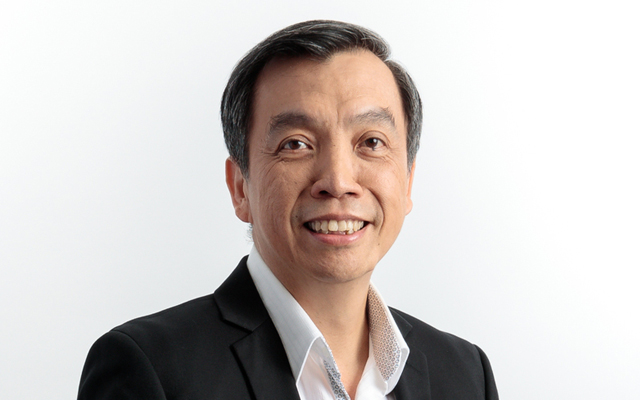Ng Chee Keong, chief operating officer, Scoot understands that the airline needs to continue to offer value to its customers in order to further its growth and expansion. He shares how Scoot remains nimble and agile so that it can quickly adjust to ever-evolving demand patterns
 Is Scoot nearing pre-pandemic capacity levels? What are some of the efforts in trying to meet pre-pandemic levels or even better them?
Is Scoot nearing pre-pandemic capacity levels? What are some of the efforts in trying to meet pre-pandemic levels or even better them?
We have resumed over 80 per cent of our pre-pandemic capacity, and will continue to work towards full network restoration by 2023.
For 2023, we are continuing to prioritise increasing flight frequencies to travellers’ favourite holiday destinations, just in time for customers to plan their summer travels.
For instance, flight frequencies to Athens will increase from twice-weekly to four times weekly, flight frequencies to Perth will increase from 10 to 12 times weekly, flight frequencies to Sapporo through Taipei will increase from thrice to four times weekly, and flight frequencies to Tokyo through Taipei will increase from 10 to 12 times weekly.
Closer to Singapore, flight frequencies to Langkawi will increase from four to seven times weekly, and flight frequencies to Manado will increase from thrice to four times weekly.
We remain committed to enhancing connectivity and enabling more travel opportunities.
I notice the planes have been downsized – the Embraer’s are noticeably smaller in capacity than the Airbuses and Boeings. Could you shed light on this move?
We are the first Singaporean carrier to operate the E190-E2, which is the latest variant of Brazilian aircraft manufacturer Embraer’s line of regional jets. Fitted with 112 seats in a single class configuration, this investment signals Scoot’s confidence in the demand for air travel, and allows us to better match capacity to demand as we enhance network connectivity.
Expanding our fleet to include nine new E190-E2 aircraft enables us to continue operating a modern and fuel-efficient fleet. This move also allows us to serve places which we previously could not (such as smaller points and unique markets), be nimbler to take on new opportunities, as well as show our commitment to the environment due to the lesser carbon footprint per pax.
Any scoop on where Scoot is planning to expand its network to in the near future?
New destinations are evaluated based on various factors, including demand, operational compatibility, and economic viability. We will continue to remain nimble in adjusting our network in tandem with evolving developments and opportunities.
Across 2022, we launched several new routes, such as Jeju and Miri, to seize opportunities, took over SilkAir transferred routes Lombok and Yogyakarta, and resumed non-stop flights from Singapore to Seoul and Singapore to Tokyo.
China was the top country market pre-pandemic, how are things coming along there?
There is pent-up travel demand with many Chinese travellers seeking to travel after a three-year hiatus. When the country announced that it would be lifting its Covid-19 restrictions earlier this year, there were significant increase in bookings for both travel within China and abroad.
We are still in early days of the reopening of China’s borders and hence, there are still some uncertainties, but people are eager to travel and we have seen how quickly consumer confidence can improve.
We have been actively preparing for this moment, as we work towards building back our pre-Covid coverage across China. At present, we serve eight points in mainland China, operating once-weekly flights between Singapore and Fuzhou, Qingdao, Wuhan, and Zhengzhou. We also operate twice-weekly flights between Singapore, Guangzhou and Tianjin, and thrice-weekly flights between Singapore, Hangzhou and Nanjing. This totals 26 weekly flights to seven cities – Fuzhou, Guangzhou, Hangzhou, Nanjing, Qingdao, Tianjin and Zhengzhou.
Building on this momentum, we will continue with planned resumptions across our China network, restarting flights to Haikou, Ningbo and Xi’an in April 2023, bringing our total number of weekly flights to China to 42 weekly flights by the end of April 2023.
With services to Nanning and Shenyang resuming in May 2023, our customers can look forward to 57 weekly flights to China by the end of June 2023.
How are changing traveller habits and expectations influencing Scoot’s hardware and software, including sustainability-related initiatives?
Today, operating a young fleet of new generation aircraft is one of the most effective ways for us to significantly reduce carbon emissions on the environment. Our sustainability strategy requires multiple levers including investments in new aircraft, achieving higher operational efficiency, adopting sustainable aviation fuels (SAFs), and sourcing for high quality carbon offsets.
Exploration of adopting sustainable fuels is another lever that will help us to achieve our long-term decarbonisation goals. For this, collaboration with governments, as well as partners such as aircraft manufacturers, technology providers, and fuel suppliers, is essential to our success.
We continue to look for avenues for improvement and innovate for the better. The recent CAAS-SIA-Temasek SAF pilot marks a big step – not only for us as an airline, but also for the aviation industry. We are leading new sustainable practices in the region that benefit all of our stakeholders.
In July 2022, SAF was uplifted on Singapore Airlines and Scoot flights. The use of the SAF over the one-year pilot is expected to reduce about 2,500 tonnes of carbon dioxide emissions.
Scoot, being an LCC (low-cost carrier), will drive further efficiency per flight given that our planes are designed to carry more passengers per fleet, therefore the impact each flying passenger has is also lower.
Scoot, together with the Singapore Airlines (SIA) Group, has committed to the 2050 net zero goal. With our relatively young fleet (six years six months on average) that is on average around 25 per cent more fuel efficient than the older generation aircraft that they replace, the SIA Group is already at a level of carbon intensity some airlines have set as their 2030 target.
On manpower, since the start of the pandemic, the SIA Group retained a large number of our talented and trained pool of ground staff, pilots, and cabin crew, to support our base operations as we ramped up our operations in preparation for the recovery of travel resumptions, putting it in a strong position to capture the pent-up demand.
What trends do you think will shape aviation over the next decade or so, considering it’s been just over a decade since Scoot started?
Over the next decade, we expect quicker adoption of technological advances. While adopting new technology has always been the norm for the aviation industry, the pandemic showed how quickly we can upgrade and utilise new technology to improve the flying experience.
These would include the continued adoption of technology such as biometrics and the cloud, which will allow passenger services to become self-serviced and more efficient. As a result, self-service check-ins will become commonplace across airports around the world.
We also expect widespread adoption of SAFs and green aircraft technology, including new engine core concepts. Combined, these technology advancements will keep the aviation industry on track for its 2050 sustainability goal of net zero emissions.
How confident is Scoot in the air travel demand in Asia-Pacific and what is Scoot’s strategy to capture this market?
We are confident that air travel demand will continue to remain robust in 2023 with further relaxation of travel restrictions.
However, the current economic situation is one that affects every industry, with potential headwinds such as elevated fuel prices, interest rate hikes, rising inflation, changing consumer preferences and competition from other airlines.
Scoot is committed to ensuring that our prices remain affordable and maintaining our position as the low-cost carrier of choice, especially in the face of consumers becoming more price sensitive in this present economic climate.


